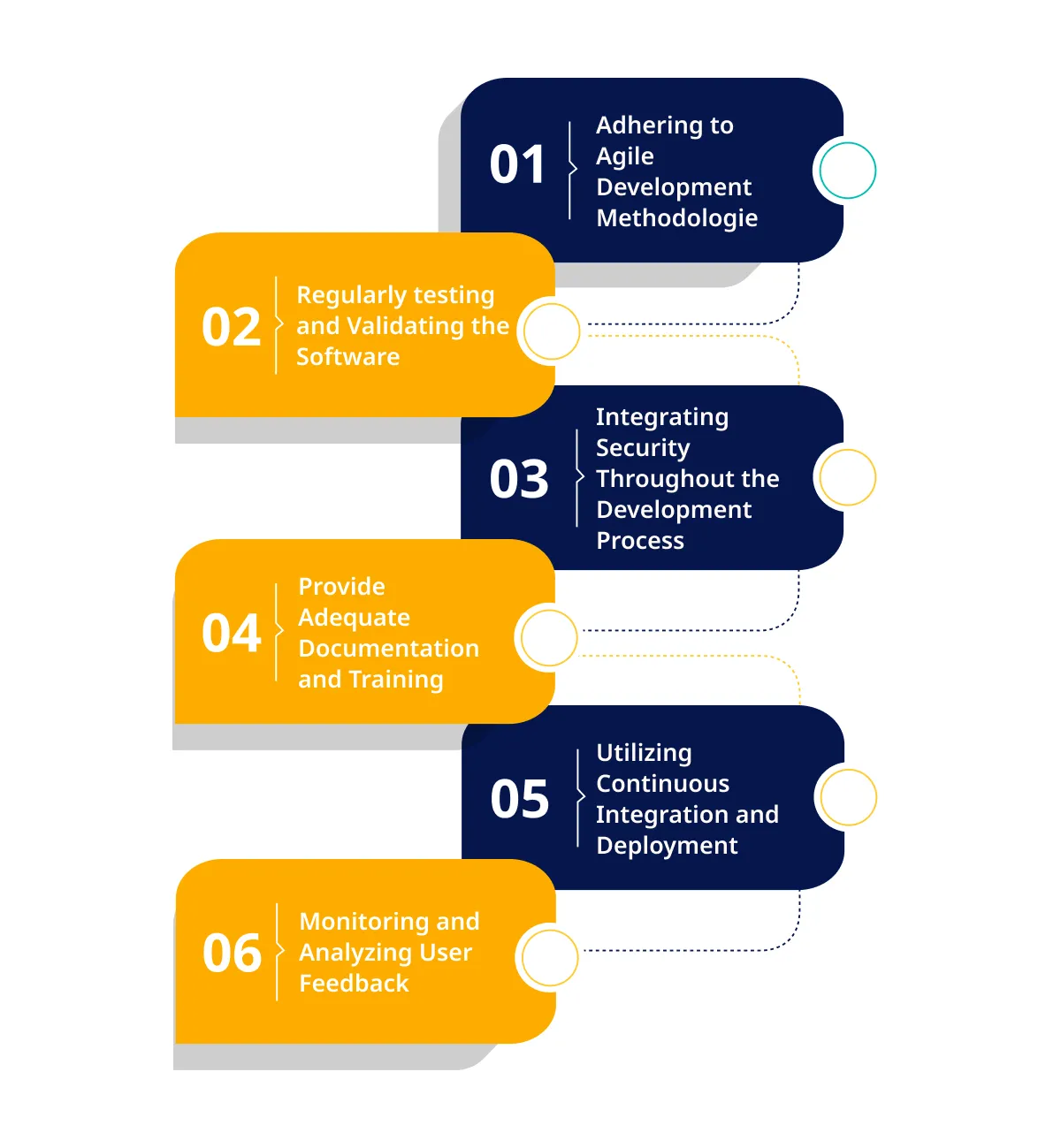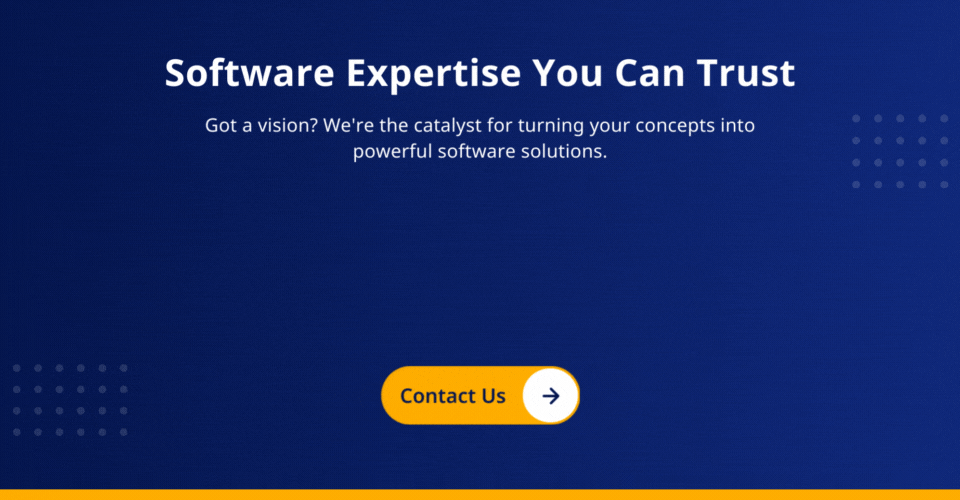Are you frequently confronted with many challenges in the dynamic realm of custom software development? This process can often be overwhelming as automation takes the spotlight and new tools emerge incessantly.
Rest assured, we are here to provide you with expert guidance! This blog aims to unveil the most prevalent software development challenges and equip you with effective strategies and industry best practices to surmount them.
But we won’t stop there. We’ll also uncover the secrets of agile methodology, robust testing and security integration, and the power of continuous integration and deployment.
Whether you are an experienced developer seeking fresh insights or a business owner embarking on a custom enterprise software development project, this blog is your key to mastering the art of overcoming obstacles. Let us delve in and triumph together!
Common Challenges and Effective Strategies For Custom Software Development
Challenge#1: Inadequate Requirements Gathering
One of the most significant software development challenges is inadequate requirements gathering. This happens when the project team fails to understand and document the needs and expectations of stakeholders thoroughly. Incomplete or ambiguous requirements can lead to misunderstandings, scope creep, and unsatisfied stakeholders.
Solution: Conduct Thorough Requirements Gathering
To overcome the challenge of inadequate requirements gathering, it is crucial to invest sufficient time and effort in gathering comprehensive and accurate requirements. This involves engaging with stakeholders, conducting workshops, and utilizing techniques such as user stories and use cases. The goal is to capture all essential aspects and clearly understand stakeholder needs.
Get free consultation and let us know your project idea to turn it into an amazing digital product.
Challenge#2: Unclear Objectives and Goals
Without clear objectives and goals, a custom enterprise software development project can lose focus and direction. When the project team and stakeholders are not aligned on the desired outcomes, it can waste time and resources.
Solution: Establish Clear Objectives and Goals
To address the challenge of unclear objectives, define clear objectives and measurable goals at the beginning of the project. This includes identifying the purpose of the software, establishing key performance indicators (KPIs), and outlining success criteria. Regularly revisiting and communicating these objectives helps maintain focus and alignment.
Challenge#3: Poor Communication with Stakeholders
Effective communication is vital for the success of any custom software development project and is one of the prevalent software development challenges. Poor communication can lead to misalignment, missed expectations, and delays.
Solution: Prioritize Effective Communication with Stakeholders
To overcome the challenge of poor communication, it is essential to establish open lines of communication with stakeholders. This includes regularly updating the project’s progress, seeking feedback, and promptly addressing concerns. Utilizing project management tools, scheduling regular meetings, and involving stakeholders in decision-making processes facilitate effective communication.
Challenge#4: Insufficient Budget or Resources
Limited budgets and resources can be another significant software development challenge. Insufficient funding can restrict the development team’s ability to deliver a high-quality product.
Solution: Create a Realistic Budget and Allocating Resources Appropriately
Proper resource allocation ensures the team can deliver high-quality products within the constraints. A thorough analysis of the project’s scope and requirements is crucial to address the challenge of insufficient budget or resources. This analysis helps create a realistic budget for custom software development costs considering the necessary resources, such as skilled team members, tools, and technologies.
Challenge#5: Unforeseen Technical Difficulties
Technical challenges are common in custom enterprise software development. These can range from compatibility issues with existing systems to scalability concerns or integration complexities. Unforeseen technical difficulties can significantly impact project timelines and deliverables.
Solution: Identifying and Mitigating Technical Risks
To overcome this software development challenge of unforeseen technical difficulties, a comprehensive technical analysis should be conducted to identify potential risks early and develop effective mitigation strategies. Engaging experienced developers and leveraging proven technologies can help address technical challenges effectively.
Challenge#6: Inexperienced or Incompatible Team Members
The success of a custom enterprise software development project relies heavily on the skills and compatibility of the development team. Inexperienced or incompatible team members can hamper productivity, collaboration, and the project’s overall success.
Solution: Building and Managing a Strong Development Team
Building and managing a solid development team is essential to address such software development challenges of inexperienced or incompatible team members. This includes ensuring team members have the skills and expertise, fostering effective collaboration and communication, and providing training opportunities to enhance their capabilities.
Also Read: How CRM Software Development can Optimize Performance of Your Business
Additional Challenges and Their Overcoming Strategies
Challenge: Scope Creep
Scope creep refers to the continuous expansion of project requirements beyond the original scope, resulting in timeline delays and increased custom software development costs.
Overcoming Strategy:
- Establish a well-defined and documented scope at the beginning of the project.
- Use change management processes to evaluate and approve any proposed changes to the scope.
- Regularly communicate with stakeholders to manage their expectations and ensure they understand the impact of scope changes on the project timeline and budget.
- Implement agile methodologies that allow for flexibility and iterative development while maintaining control over scope.
Challenge: Team Collaboration and Coordination
Custom enterprise software development projects often involve multiple team members working together, and coordinating their efforts can be another software development challenge.
Overcoming Strategy:
- Foster effective communication and collaboration within the team through regular meetings, brainstorming sessions, and utilizing collaboration tools.
- Implement project management tools that enable task tracking, progress monitoring, and easy communication among team members.
- Clearly define roles and responsibilities for each team member, ensuring everyone understands their contributions to the project.
- Establish a project manager or scrum master who can facilitate coordination and resolve any conflicts that may arise.
Challenge: Integration with Existing Systems
Integrating custom software with existing systems or third-party applications can be complex and another software development challenge.
Overcoming Strategy:
- Conduct a thorough analysis of existing systems and their integration requirements before starting the development process.
- Identify potential integration challenges early on and develop a detailed integration plan.
- Collaborate with stakeholders and third-party providers to ensure smooth integration and minimize compatibility issues.
- Utilize standard APIs or develop custom APIs for seamless data exchange between systems.
- Implement thorough testing and validation procedures to ensure successful integration.
Challenge: User Adoption and Training
Users may face difficulties in adopting and utilizing custom enterprise software development effectively.
Overcoming Strategy:
- Conduct user research to understand their needs and preferences.
- Design the user interface and user experience (UI/UX), focusing on simplicity, intuitiveness, and ease of use.
- Provide comprehensive documentation, user manuals, and training materials to guide users through the software’s functionalities.
- Offer training sessions or workshops to familiarize users with the software and address any questions or concerns.
- Continuously gather user feedback and make iterative improvements based on their needs and experiences.
Get free consultation and let us know your project idea to turn it into an amazing digital product.
Best Practices in Custom Software Development
Let’s now look at some of the best practices that can be considered for custom enterprise software development:
Adhere to Agile Development Methodologies
Agile development methodologies, like Scrum or Kanban, promote flexibility, iterative development, and continuous improvement. By embracing agile practices, development teams can adapt to changing needs and deliver incremental value to stakeholders.
Regularly Test and Validate the Software
Implementing a robust testing strategy throughout the development lifecycle is essential. This includes unit, integration, and user acceptance testing. Regularly testing and validating the software helps identify and resolve issues promptly, ensuring a high-quality end product.
Integrate Security Throughout the Development Process
Security is a critical aspect of custom enterprise software development. By integrating security practices throughout the development process, such as secure coding techniques, regular security audits, and adherence to industry standards, vulnerabilities can be minimized, and data can be protected.
Provide Adequate Documentation and Training
Comprehensive documentation of the software architecture, design, and functionalities is crucial for maintaining the software’s long-term maintainability. Additionally, providing training resources and user manuals helps end-users effectively utilize the software and ensures a smooth adoption process.
Utilize Continuous Integration and Deployment
Continuous integration and deployment (CI/CD) pipelines automate build, testing, and deployment processes. This approach ensures faster and more reliable software releases, enabling teams to respond quickly to changes and deliver updates efficiently.
Monitor and Analyze User Feedback
Collecting and analyzing user feedback systematically is invaluable in improving the software’s performance and user experience. Monitoring user behavior, conducting surveys, and utilizing analytics tools provide insights that can drive future iterations and enhancements.
Also Read: How to Manage Risks in The Software Development Lifecycle
Case Studies: Examples of Successful Custom Software Development Projects
ValueCoders has been providing custom software development for CRM, eCommerce, healthcare apps, etc., for several years. We have the experience and expertise to tackle these software development challenges and help clients meet their business goals. Here’s a glimpse of the projects that we have worked on in the past.
Get free consultation and let us know your project idea to turn it into an amazing digital product.
Project A: Implementing an Asset Management Software
ValueCoders successfully implemented asset management software.
Efficient modeling of your business network is crucial to stay competitive in today’s rapidly evolving business landscape. This case study explores how an AI-powered solution revolutionized the process of business network modeling, taking into account existing assets and transactions involving tangible or intangible goods, services, or property. Additionally, it highlights the significance of participant identities across multiple business networks and the role of defining transactions that interact with assets within the network model.
Project B: Developing an eCommerce Web Solution
ValueCoders assisted a business in developing a tailored e-commerce web solution.
This case study demonstrates the value of partnering with a skilled development team to achieve tailored solutions that align with business goals and drive digital transformation. The collaboration between ValueCoders and the client showcased the successful development of a modular website, addressing complex business requirements and ensuring secure access to authorized modules. By employing a modular architecture, implementing robust authentication and authorization mechanisms, and focusing on user experience, we delivered a solution that enhanced operational efficiency and paved the way for future scalability.
Project C: Building a Learning Management System
ValueCoders built a customized mobile app for learning management systems.
Through dedicated efforts, our team successfully developed an efficient e-learning management system that revolutionized the education landscape. By seamlessly integrating virtual classrooms, blended learning, and self-paced learning, the platform catered to diverse learning styles, enabled personalized educational experiences and promoted engagement and collaboration. This case study exemplifies the transformative potential of advanced e-learning solutions in facilitating accessible, engaging, and effective education in the digital age.
Key Takeaways
Custom software development projects present unique challenges that can be overcome through effective strategies and best practices. Businesses can navigate these software development challenges and achieve successful outcomes by investing in detailed requirements gathering, clear communication, skilled teams, and agile methodologies. Additionally, prioritizing testing, security, documentation, and user feedback ensures the delivery of high-quality custom software that meets stakeholder expectations.
At ValueCoders, we understand the challenges in custom software development for healthcare, fintech, manufacturing, and more industries and have a proven track record of delivering successful projects. Contact us today to discuss your custom software needs and explore how we can effectively help you overcome these challenges.








